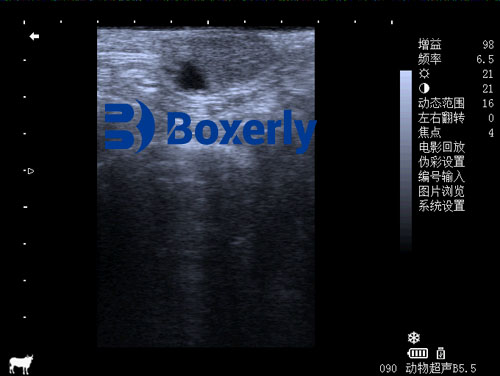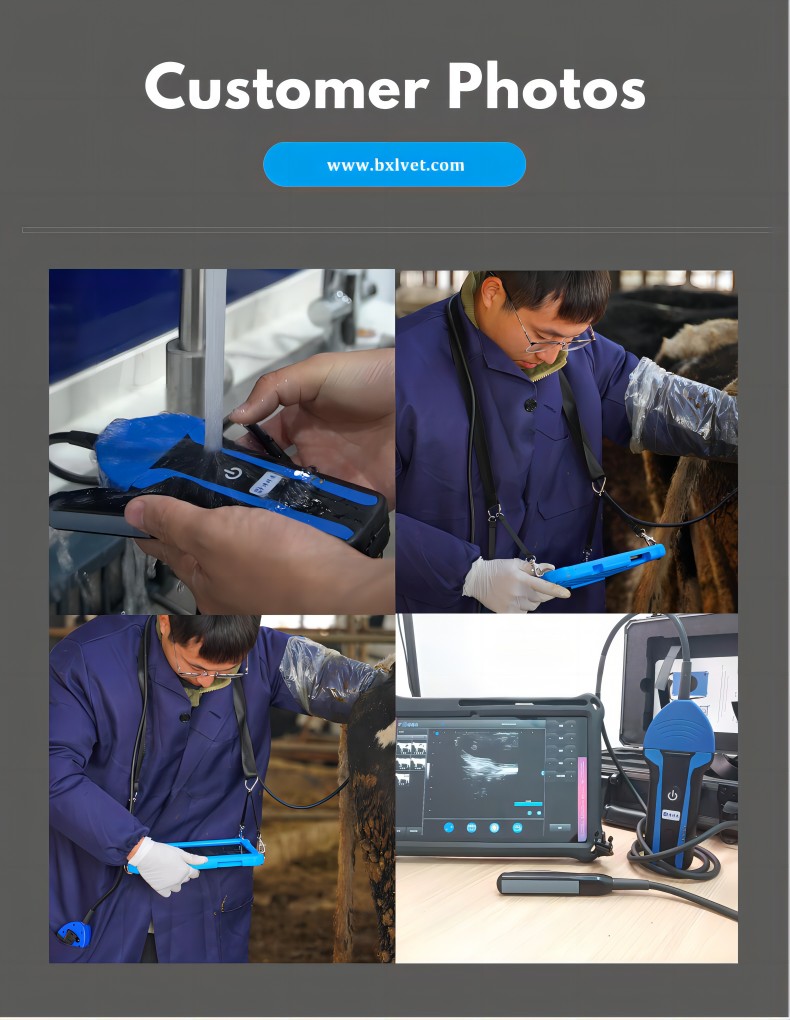Comparing Sheep Ultrasonography and Rectal Palpation in Reproductive Diagnosis
As sheep farming becomes increasingly intensive and profit-driven, timely and accurate reproductive diagnosis has become more essential than ever. In the past, traditional rectal palpation was the primary tool for detecting pregnancy in ewes, relying heavily on a veterinarian’s experience and tactile skill. But with the advancement of veterinary imaging, especially veterinary ultrasonography, a shift is occurring on sheep farms across the globe. Ultrasonography has proven to be a safer, more efficient, and more accurate alternative, especially for early pregnancy detection and reproductive monitoring.

This article compares the advantages and limitations of ultrasonography and rectal palpation in sheep reproduction management, combining field practices and research from both traditional systems and modern veterinary science, particularly as understood by practitioners in Western countries.
Traditional Rectal Palpation in Sheep Pregnancy Diagnosis
Rectal palpation is a manual method in which the veterinarian inserts a gloved and lubricated arm into the sheep’s rectum to palpate the uterus through the rectal wall. This technique became popular due to its low equipment requirements and relatively high accuracy when performed by experienced veterinarians.
Advantages of Rectal Palpation:
-
Low-cost and equipment-free: It doesn’t require machines, only gloves, lubricant, and skill.
-
Accurate in experienced hands: For skilled practitioners, it yields decent accuracy after 45–60 days of gestation.
-
Useful in field settings: Especially in regions with limited access to modern diagnostic tools.
Limitations and Risks:
Despite its practicality, rectal palpation has several drawbacks:
-
Operator-Dependent Accuracy:
Success is highly reliant on the practitioner’s experience. Novices may struggle to detect subtle uterine changes in early pregnancy or differentiate between pregnancy and pathologies like uterine infection or pseudopregnancy. -
Late Pregnancy Detection:
Rectal palpation is typically effective only after 45 to 60 days of gestation. Early pregnancy, especially before 30 days, is extremely hard to confirm using this method. -
Limited Application in Small Animals:
Sheep are small-bodied animals, making rectal palpation more challenging compared to cows or horses. -
Physical Stress and Health Risks:
Improper technique can cause rectal tears, uterine trauma, or even abortion. In small ruminants like sheep, the risk is amplified due to delicate anatomy. -
Poor Ergonomics:
The technique is physically demanding, often resulting in discomfort for both the animal and the operator. It is also unhygienic and fatigue-inducing during high-volume screening. -
Delayed Decision-Making:
Since the method can’t detect early gestation, it delays critical management decisions like rebreeding or culling, especially in synchronized breeding programs.
The Rise of Veterinary Ultrasonography in Sheep Reproduction
Veterinary ultrasonography, particularly B-mode (brightness mode) real-time ultrasound, has transformed reproductive management in sheep flocks. It allows live imaging of the uterus, fetus, and ovaries, and is widely recognized in the global veterinary community for its practicality and efficiency.
Ultrasound-based pregnancy diagnosis became popular in sheep farming during the late 20th century and is now a routine tool in many countries, including Australia, New Zealand, the UK, and the US.
Advantages of Veterinary Ultrasonography:
-
Early Pregnancy Detection:
Ultrasonography can detect pregnancy as early as 25 to 30 days post-breeding by visualizing the embryonic vesicle and heartbeats. This enables faster decision-making. -
High Accuracy:
Research by Mushtaq, Ttapp, and Watt (2020) shows that ultrasound provides over 90% accuracy in early-stage pregnancy diagnosis, outperforming rectal palpation and hormonal assays. -
Non-Invasive and Safe:
Unlike rectal palpation, ultrasonography does not require internal insertion. It eliminates the risk of trauma or abortion and is particularly suitable for small ruminants. -
Real-Time Visualization:
Ultrasonography offers live imaging of the fetus, allowing observation of embryonic development, fetal heartbeat, uterine tone, and even the number of fetuses. -
Ease of Use:
Portable veterinary ultrasound machines are relatively easy to operate with some training, and the learning curve is shorter compared to mastering rectal palpation. -
Cleaner and More Ergonomic:
Ultrasound scanning doesn’t involve internal exploration, making it cleaner and more efficient during large-scale screenings. Operators experience less fatigue and better hygiene. -
Economic Benefits:
By identifying non-pregnant ewes earlier, farmers can rebreed them, cull them, or repurpose them for wool or market sale. This leads to feed savings and increased profitability.

Comparison Table: Rectal Palpation vs. Ultrasonography
| Feature | Rectal Palpation | Ultrasonography |
|---|---|---|
| Accuracy | Moderate (experience-based) | High (>90%) |
| Earliest Detection Time | 45–60 days post-mating | 25–30 days post-mating |
| Risk of Injury | Moderate to high | Very low |
| Animal Size Limitation | Difficult in small animals | Suitable for small animals |
| Learning Curve | Steep | Moderate |
| Hygiene | Low | High |
| Ergonomics | Fatiguing | Operator-friendly |
| Equipment Cost | Minimal | Moderate (but cost-effective long term) |
| Real-Time Visualization | No | Yes |
| Identification of Twins | Difficult | Easy |
International Perspectives and Research Insights
In Western veterinary medicine, ultrasound is now the standard for reproductive monitoring in sheep, especially in larger operations. According to the American Sheep Industry Association, integrating ultrasound into sheep reproductive protocols has improved reproductive efficiency by reducing the number of open ewes and optimizing the timing of lambing.
Research published in journals such as “Theriogenology” and “Small Ruminant Research” confirms that ultrasound is not only accurate but also helps assess fetal health and predict parturition more precisely than traditional methods.
In the UK, sheep veterinarians use ultrasound scanning routinely during mating seasons to assess breeding outcomes and organize ewe groups by lambing date, improving lamb survival rates.
In Australia and New Zealand, where sheep farming is industrialized, ultrasound scanning is used in “pregnancy scanning contractors” models—teams who visit farms with mobile ultrasound units, scanning thousands of ewes quickly and accurately.
Limitations of Ultrasonography
While ultrasonography offers many benefits, it’s important to acknowledge some limitations:
-
Initial Equipment Investment:
Portable ultrasound scanners cost more upfront compared to rectal palpation tools. However, many farmers recoup the cost through higher reproductive efficiency and fewer feed losses. -
Requires Training:
Although easier to learn than rectal palpation, ultrasound interpretation still requires training to distinguish normal pregnancies from abnormalities like mummified fetuses or fluid accumulations. -
Power Supply and Maintenance:
In remote or underdeveloped areas, access to electricity or battery recharging can be an issue, though modern battery-operated units are mitigating this problem. -
Operator Availability:
In some rural regions, trained ultrasonographers may be scarce, limiting its use.
Conclusion: Why Ultrasonography is the Future of Reproductive Diagnosis
Ultrasonography has become the gold standard in sheep pregnancy diagnosis because of its early detection capabilities, high accuracy, safety, and practicality. While rectal palpation may still have value in low-tech settings or as a complementary method, its disadvantages make it less suited for modern flock management, especially under intensive breeding systems.
For sheep producers aiming to maximize productivity and minimize reproductive wastage, veterinary ultrasonography provides a robust, efficient, and animal-friendly diagnostic solution.
As technology becomes more accessible and user-friendly, more sheep operations—large and small—are adopting ultrasound not just for pregnancy diagnosis but also for general reproductive health monitoring. This shift reflects a broader trend in livestock production toward precision farming, where data-driven, low-risk, and efficient methods are preferred over traditional, less reliable techniques.
Veterinary ultrasonography isn’t just a replacement for rectal palpation—it represents a paradigm shift in how we understand and manage animal reproduction.





